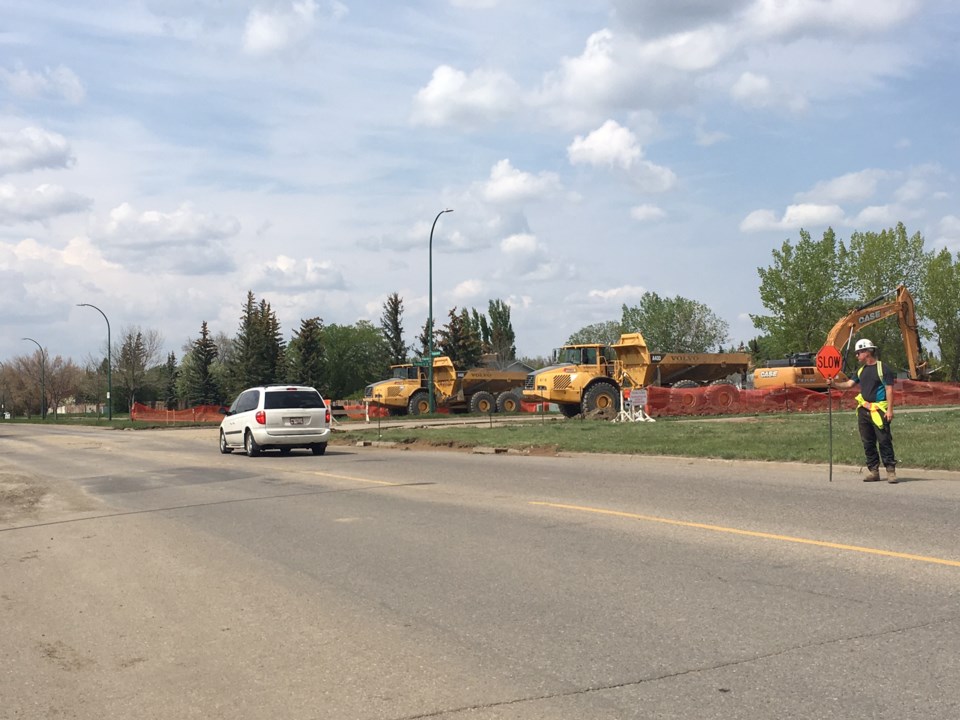Longmont is looking at several options to improve the Main Street corridor from Highway 66 on the north to Plateau Road on the south.
Late last year, city staff outlined, for the Longmont City Council, planned and ongoing improvements to transportation along Main Street. One of the most expansive is the planned Coffman Street Corridor, which is considered a “critical” Bus Rapid Transit, or BRT, corridor. The city was awarded a grant to transform Coffman Street from First to Ninth avenues into an Enhanced Multi-Use Corridor that will feature wider sidewalks, separated bike lanes and dedicated bus lanes, according to the city staff report.
City staff also pointed to other efforts on and adjacent to Main Street including the STEAM (Science, Technology, Education and Arts) project which focuses on the area around First Avenue and Main Street and the St. Vrain River corridor. City staff, members of the Downtown Development Authority also are involved in the Advance Longmont 2.0 working groups.
“While this work has largely been on hold due to the pandemic, this work is resuming; these initiatives support recommendations identified in the Main Street Corridor Plan,” the city staff report presented in Dec. 2020 stated.
Market incentive options to coincide with ongoing Main Street efforts were outlined earlier this month during a city council study session, a move that drew the praise of developer Gary Hassenflu, president of the Garrison Development Company. The Kansas City-based Garrison Development Company revamps and builds single-family and mixed-use projects in the Midwest and mountain states, including Greeley.
Hassenflu told the council — during a public invited to be heard portion of the study session — that Longmont’s continued redevelopment of Main Street will draw developers including his own company.
“I can tell you we are interested in developing in that area,” Hassenflu told the council. “I would very much encourage you to move forward.”
A city staff report targets several funding methods to help Main Street, including:
- Capital Improvement Program, or CIP: A number of transportation and public realm projects could be completed, all or in part, by using the city’s CIP funds. Several Main Street transportation efforts have already been finished in partnership with the Colorado Department of Transportation. Others remain unfunded including lane reconfiguration, median installation, mid-block crossings, more bicycle facilities and connections, sidewalk connections and alley enhancements. Other CIP projects include acquisition for a neighborhood park site, landscaping and street trees.
- Community Development Block Grant Program, or CDBGP: Longmont receives an annual allocation of federal funding to serve low-income populations or improve low-income areas. A significant proportion of the north Main Street corridor may be eligible for such funding to make improvements to the area, support local businesses and provide affordable housing opportunities, the staff report states. CDBGP funding could also be used for streetscape and park improvements and business facade initiatives, the report states. The city could also access a larger pool of funding through the Housing and Urban Development, or HUD, Section 108 Loan Guarantee Program.
- URBAN Renewal Districts: Certain sections of the midtown and north Main Street areas may be eligible for establishing an urban renewal district. A district could attract new development projects that will generate property tax increment funds, or TIF, from the tax mileage of other public entities, the staff report states. There is no new tax millage imposed on property owners within the district. TIF can be used to fund public improvements including parks, streets and infrastructure within a district.
- Business Improvement Districts, or BID: The district is a defined area that can be used to make and maintain public improvements in existing commercial centers, like those in the north section of Main Street, the staff report states. A BID can only be created by the city council upon petition of owners of at least 50% of the assessed property valuation and at least 50% of the district’s land. Once created, the city council would sit as an ex-officio board of directors for the district, or could appoint a board of directors. Funding for a BID is generated by imposing a property tax mill levy or special assessment on commercial properties with the district, the staff report states.
- General Improvement Districts, or GID: Typically GIDs are used to build infrastructure on raw land for commercial or residential development. They can also be used to construct public improvements in established neighborhoods. Longmont currently has a GID that overlays a portion of the downtown area and it was used to assist in providing public parking, streetscape and alley improvements. Improvements within the district are funded by imposing an additional tax mill levy on property within the district, the staff report states.



